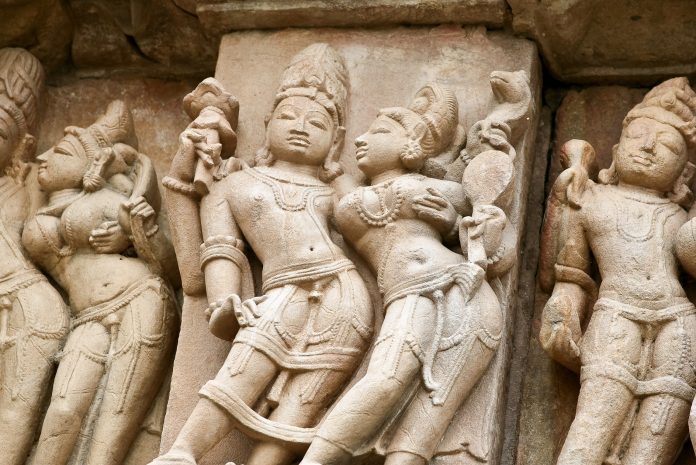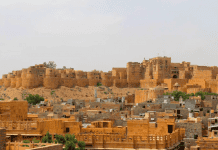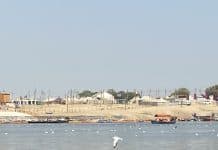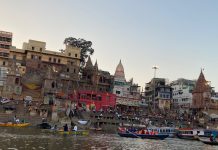A visit to the world’s famous sculpture temples of Khajuraho was long on my wish list. Khajuraho, the UNESCO World Heritage site in Madhya Pradesh, was once under the reign of the Chandela Rajputs. Devoted to Lord Vishnu, Shiva, Brahma, Sun, and Moon Gods, Khajuraho, the city capital of the Chandelas, consisted of as many as 108 temples in a massive complex. Out of the identified 85 temples, only 22 remain today, and only a few are in their original shape. Out of the eastern and southern temples, we were told not to miss the former group of temples.
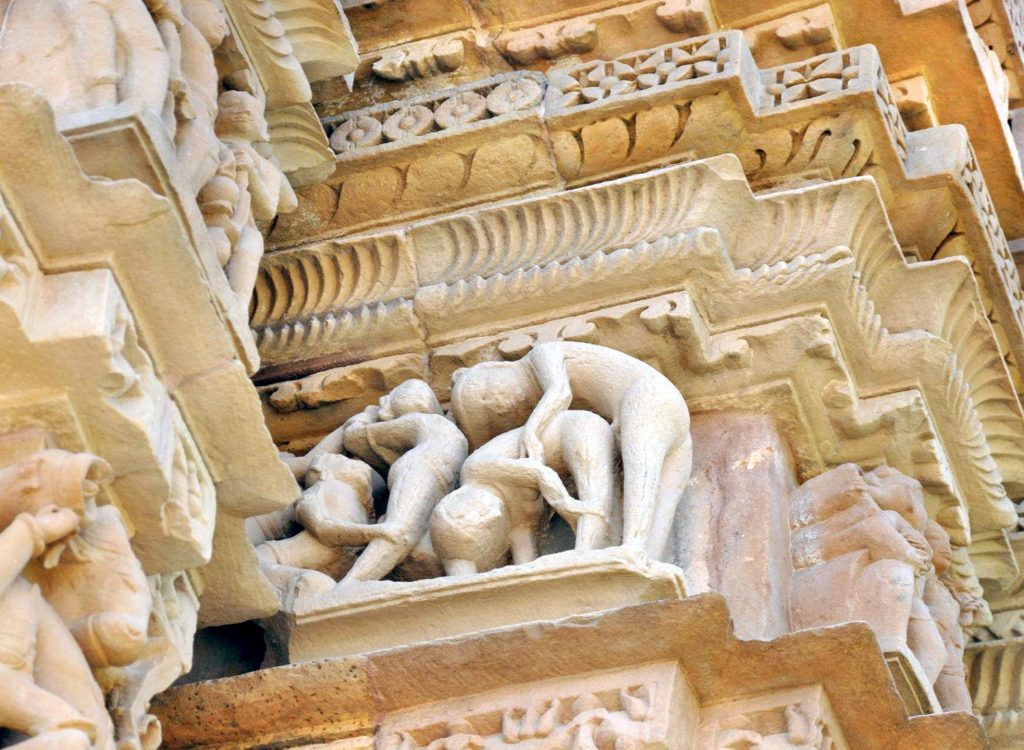
The Kandariya Mahadev, Devi, Jagadamba or Jagadambi, the Lakshmana and the Jain temples of Adinath and Parswanath, which are still worshipped, are illustrious. Most of the tourists are foreigners and the place throngs with young guides well-versed in international languages like Russian, French, German, Arabic, and more.
History of Khajuraho
The Chandelas ruled Central India between the 9th and 13th centuries AD. The temples and sculptures stand testimony to their magnificent architecture. It was intriguing to note that Khajuraho temples have endured a 1000 years, as established from one of the stone inscriptions there.
The Chandelas, who claimed they had descended from the moon, were magnificent builders of many reservoirs, tanks, and temples. They at first seemed to have been devotees of Lord Vishnu, while later rulers worshipped Lord Shiva. Yesovarman was a notable king who defeated the neighboring kingdoms and built a charming temple of Vishnu. His son Danga Deva was another famed warrior, who conquered many lands and obtained an empire after defeating Kannauj and building the Vishwanatha Temple, dedicated to Lord Shiva (the temple contained an emerald lingam).
One after another, many temples came into being, making famous the Khajuraho empire, making it renowned for its temple architecture (famous or infamous for its explicit sculptures) containing sculpted panels of gods and goddesses, flying apsaras, sura sundaris, celestial beings, mythical monsters and sculpted friezes depicting sex so boldly, which none have attempted before on such a vast scale. Above all, these sculptures are in a temple dedicated to Shiva, who according to Shiva Puran, turned Kamadeva (the Hindu god of love) into ashes upon being disturbed in his meditation. The sculptures are great masterpieces and pay a fitting tribute to the Kama Sutra –the manual of lovemaking by Sage Vatsyayana which shows the path from physical to the spiritual.
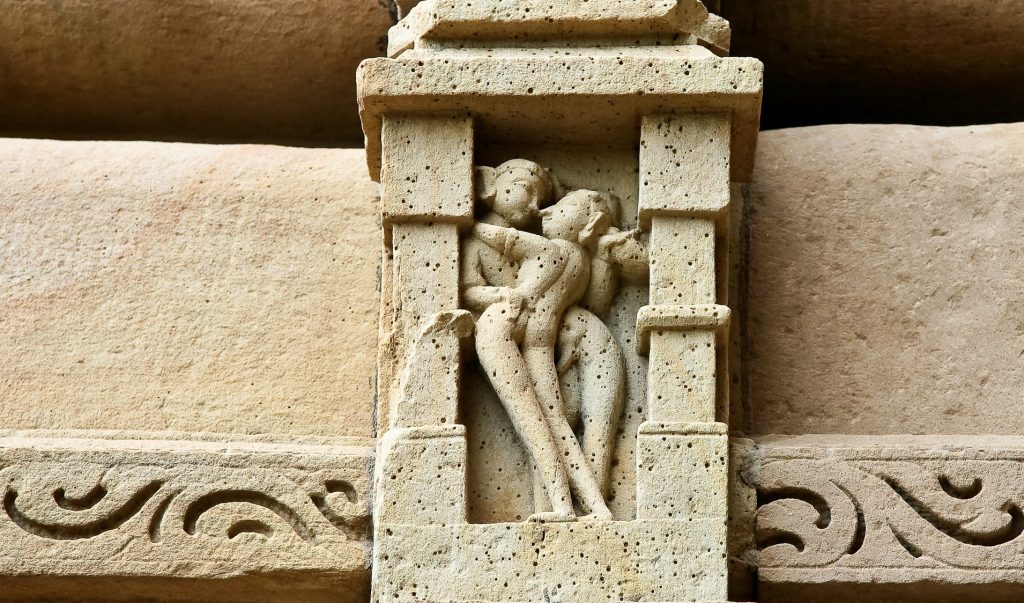
Architectural excellence
With a distinctive strategy and altitude, these temples escalate like mountain crests that reach the heavens. Minus any enclosure wall – which would have cracked the very purpose of the intense mounting of the edifices – they are built on a dais that hoists these temples from their surroundings, providing openness and an ambulatory around them.
Consistently identical in style, save for a few images here and there, nothing exists that can distinguish a Shiva temple from a Vishnu temple or a Jain one. Except for the 64 yogini temples (cult goddesses who bestow specific powers) and the Brahma (The Creator) and Mahadev (The Destroyer) temples, which are constructed largely of granite, the rest are built of fine-grained sandstone of wonderful color variations: yellow, buff, and pink, quarried from the nearby river Kaan. The essential elements of the plan, the entrance hall, vestibule, and main sanctuary are common to all the temples. But, in larger ones, lateral constructions and fortified verandas transform the halls into bigger ones.
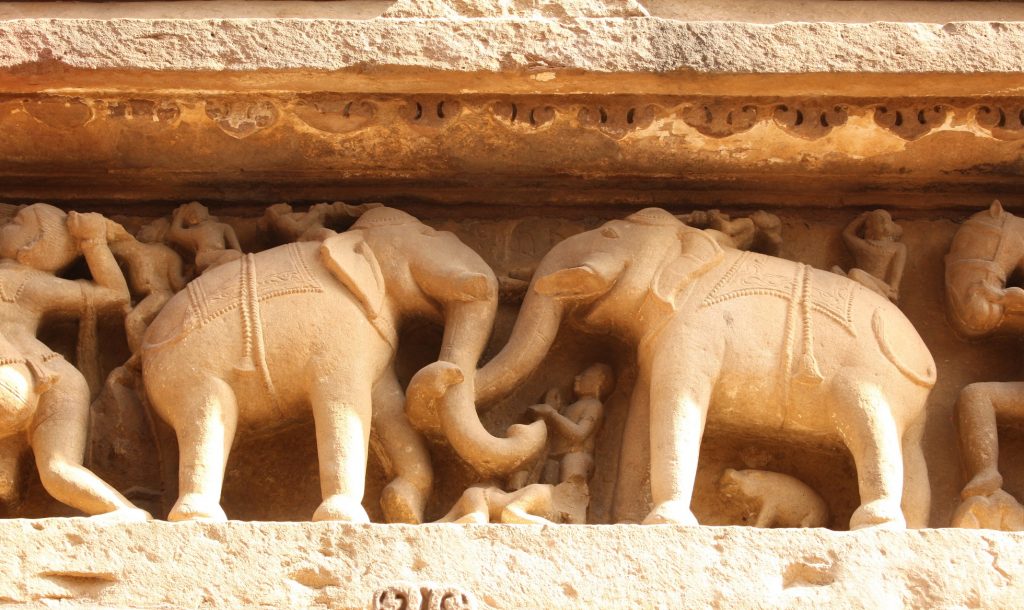
I noticed the main exteriors have ribbons or bands of sculpture and panels from which all gods and goddesses arise out of shadows. Each viewing brought in a new significance and sentiment, the experience, and knowledge of an epoch. The undulating wall space breaks the natural light into shadows. The sura sundaris beckoned me with their wide eyes and graceful poses. Sensitive to the highest degree, eroticism takes the loftiest place, that of the Divine, here in Khajuraho.
Worldwide recognition
Ibn Battuta, an Arab chronicler, refers to Khajuraho as Kajarra and, since his time, many temples have been destroyed, and idols mutilated. The Chinese traveler Huen Tsang too, who visited India, mentions Khajuraho in his memoirs. Several international writers who specialize in oriental art and literature have mentioned Khajuraho in their works.
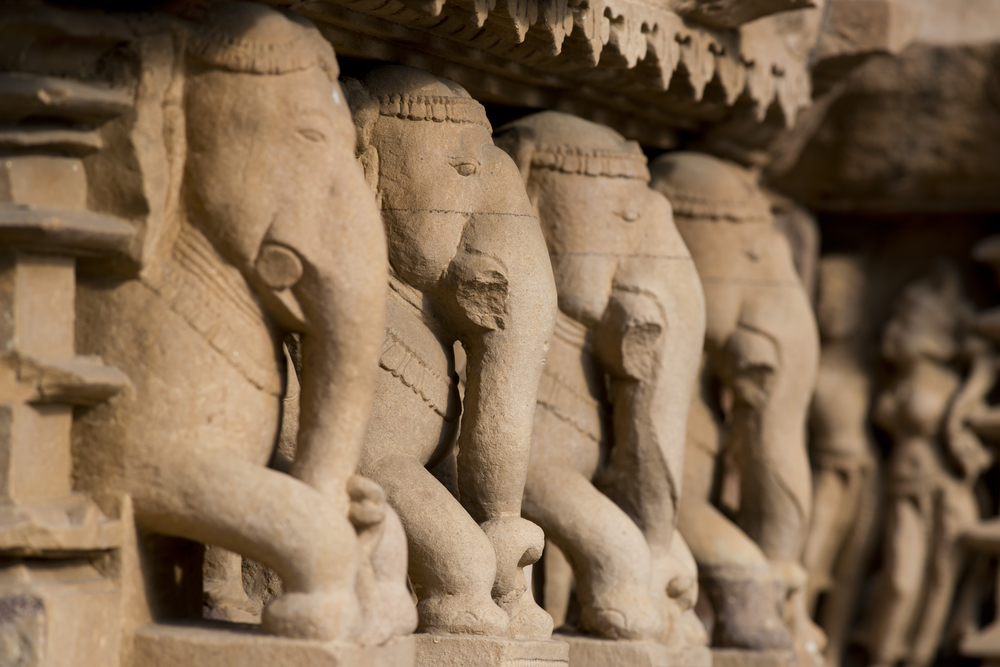
People, food and souvenirs
A majority of the population are involved in sandstone carvings and the rest are tourist guides. Must try the Bundelkhandi Thali of Bundelkhandi subzi, baffori tarkari, birra roti, and anardana pulao. Plenty of shops sell sandstone figures, poor replicas of temple statues.
Why eroticism in temples?
The question is, why and what was the purpose of sculpting sex in temples, so vividly and openly? One school of philosophy says that when one is with the right mate, one is whole and complete, and the sculpture reveals the reunion of spirit and nature, which is the ultimate goal. Another suggestion is that such sculpture diverts the ‘evil eye’ and brings good luck to the builder, the king, and continuous prosperity to the dynasty, while protecting the structures from natural calamities, such as lightning and storms.
It is indeed a gift to humanity that these temples resonate with beautiful sculptures to the glories of love and God!


